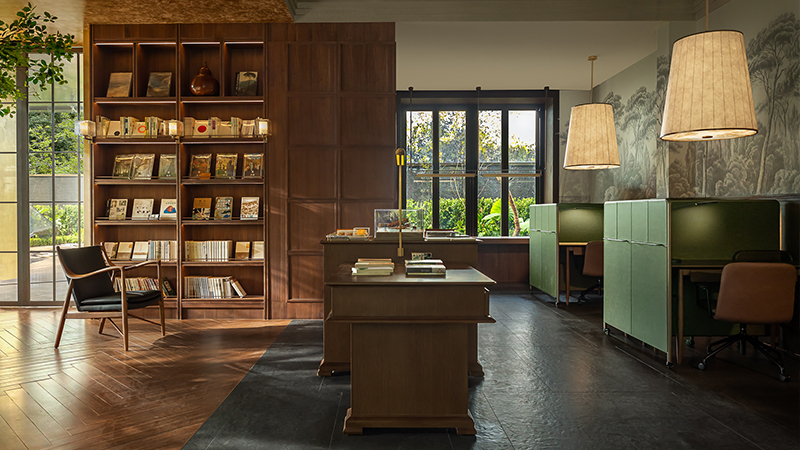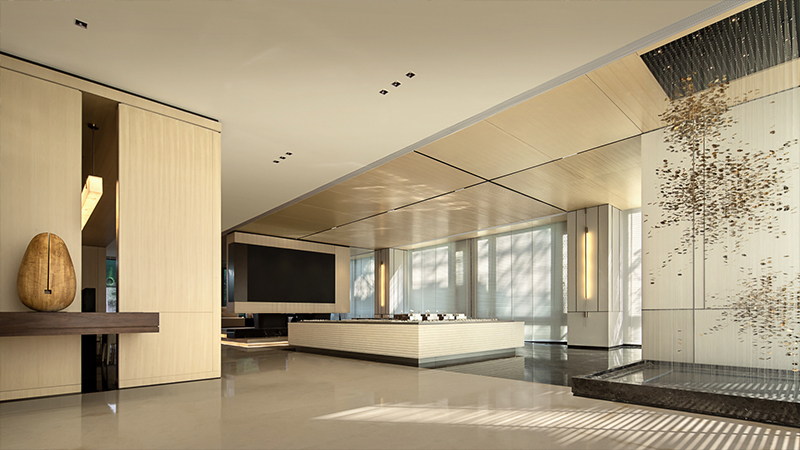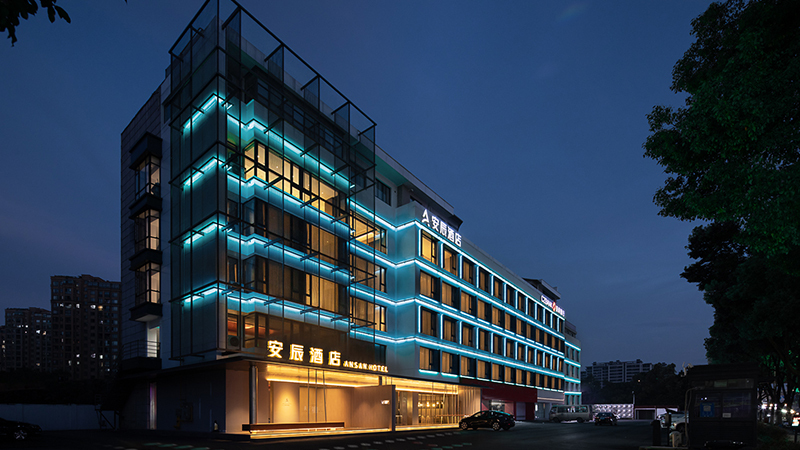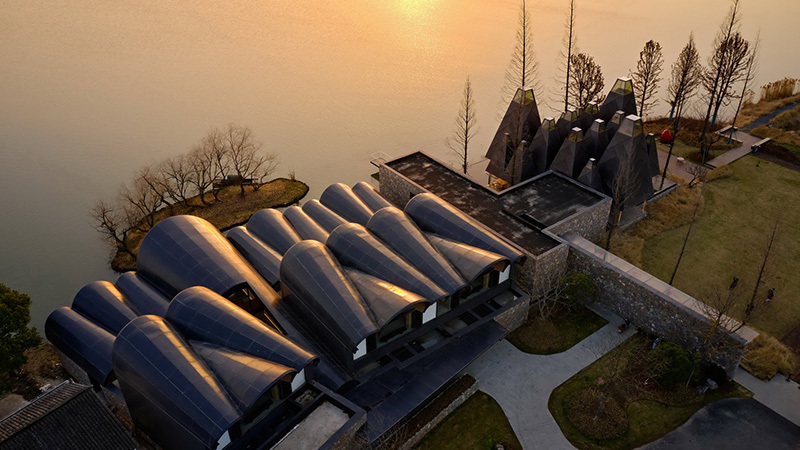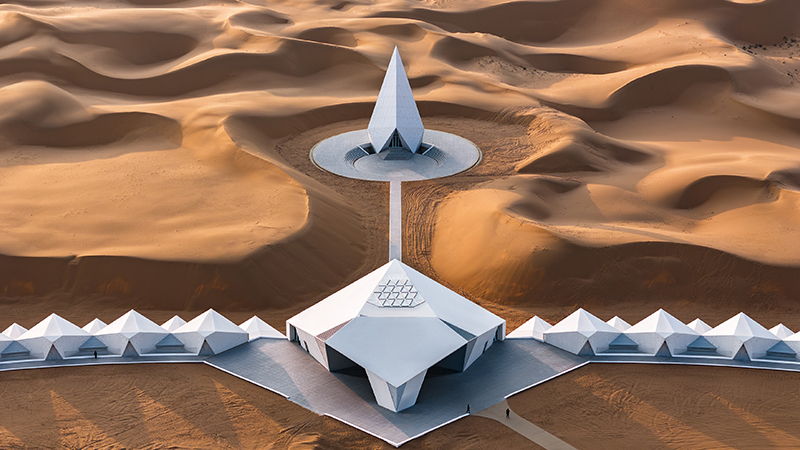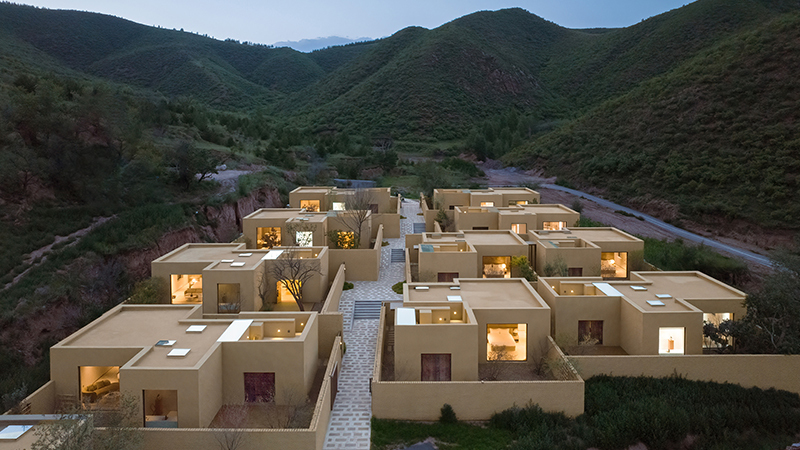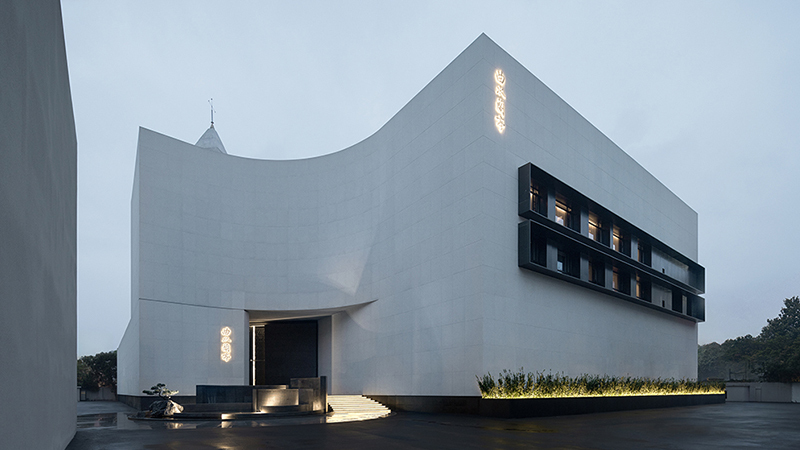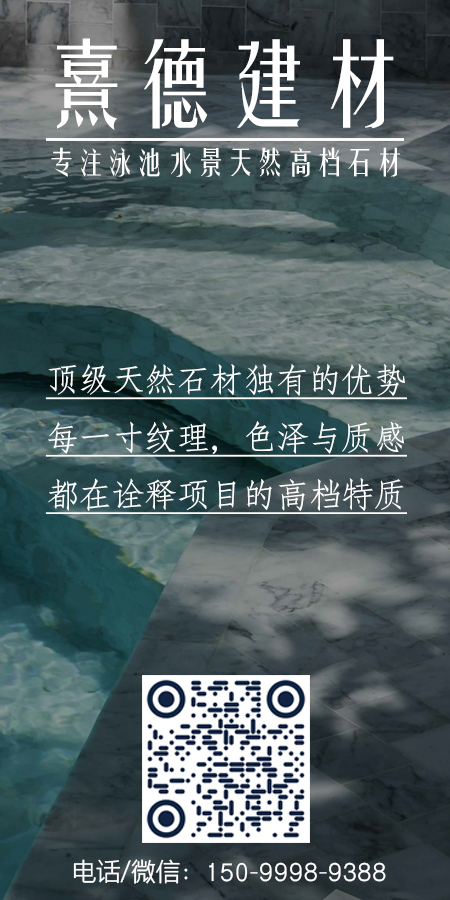自然、历史、人
WJ STUDIO | Lost Villa · Huanglong Island Lighthouse Hotel: Three Dimensions of Time — Nature, History, Humanity
01缘起
01 Origins
大约五年前,万境设计开始接触嵊泗的旅游开发项目。嵊泗位于舟山群岛东北部的悬海之地,距离舟山本岛约2.5小时船程,距离上海约3小时车船程,距离杭州约4.5小时车船程、距离宁波约4小时车客渡。尽管近年来已经开发了直升机和水上飞机航线,但相较于现代人普遍追求效率的度假方式,嵊泗的交通条件对潜在旅游消费的吸引力相当有限。
Approximately five years ago, WJ STUDIO embarked on a tourism development project in Shengsi County—a remote archipelago perched at sea in the northeastern Zhoushan Islands. The journey to Shengsi remains an expedition: 2.5 hours by ferry from Zhoushan Main Island, 3 hours combined land/sea travel from Shanghai, 4.5 hours via road and ferry connections from Hangzhou, 4 hours from Ningbo via vehicle-passenger ferries. While helicopter and seaplane routes have recently been introduced, Shengsi’s accessibility challenges modern travelers’ efficiency-driven expectations. This geographical seclusion inherently limits its appeal to mainstream tourism—a challenge that would later define our design approach for the Huanglong Island Lighthouse Hotel.
△嵊泗列岛区位
Location Map of Shengsi Archipelago
嵊泗列岛的功能发展定位是融海洋文化与海岛民俗风情为一体,以观光游览、休闲度假和科教活动为主要功能的列岛型国家级风景名胜区,而黄龙岛属于嵊泗整体规划的核心区域。设计团队初次登上黄龙岛,便被海岛独有的风貌深深打动:陡峭的岩石地貌塑造出蜿蜒的海岸线,峡湾之间散落着石砌民居,湛蓝的海面上漂泊的渔船提醒着人们,这里依然保留着传统的渔耕文化。几经走访与深入调研,黄龙岛的困境也在设计团队面前展开——黄龙岛面临着严重的乡村空心化问题——岛内年轻人多已离岛,幼儿园与小学也已关闭,留守岛内的渔民大多是老人。黄龙岛不是个例,中国近三十年快速城市化进程在一定程度上加速了乡村人口结构的变化,没有新的产业投入,乡村老龄化与活力衰退的后果在近几年已初见端倪。
Positioned as a national-level island scenic zone integrating marine culture with island folk traditions, the Shengsi focuses on ecotourism, leisure retreats, and scientific education. Huanglong Island locates at the core development area. During the design team's initial site exploration, the island's distinctive character proved profoundly arresting. The steep rocky landscape has shaped a winding coastline, with stone houses scattered between the fjords and fishing boats drifting on the deep blue sea. However, Huanglong Island is facing a significant challenge related to rural depopulation. A substantial number of young people have relocated, leading to the closure of the kindergarten and elementary school. The remaining fishermen are primarily elderly. Huanglong Island is not an isolated case. China's rapid urbanization over the past three decades has accelerated changes in the demographic structure of rural areas. Without new industrial investment, the consequences of rural aging and declining vitality have become apparent in recent years.
△黄龙岛原始村庄、地貌、植被分布
Original Village, Topography, and Vegetation Distribution on Huanglong Island
海岛乡村的振兴,是一个关乎生态、文化、经济和社会发展的深刻命题。黄龙岛拥有得天独厚的自然景观资源和弥足珍贵的人文景观条件,为慢生活度假旅游提供了坚实的基础,但单一的交通方式与空心化的现状也为设计带来了挑战。我们如何把人吸引到海岛上来,又如何把人留住,把珍贵的渔耕文化留住?
The revitalization of rural islands is a profound issue that concerns ecology, culture, economic development, and social progress. Huanglong Island boasts unique natural landscapes and invaluable cultural heritage, providing a solid foundation for slow-paced vacation tourism. However, the island's limited transportation options and depopulation present challenges for design. How can we attract people to the island and keep them there, while preserving its precious fishing and farming culture?
02时间的三重维度
02 The Three Dimensions of Time
△杉本博司摄影作品
Photographs by Hiroshi Sugimoto
“今天人们看到的一切是否与史前人类一样?”
随着前期详规工作的深入,设计项目的切入点变得越发清晰:如何保护和利用海洋的自然元素,如何将建筑融入原有海岛渔村民居聚落,如何让人真正地“走进”黄龙岛?杉本博司所探讨的主题,正是设计团队在黄龙岛最深刻的感受,也是整个设计项目生发的核心:时间。
设计以时间的三重维度作为核心概念展开:
· 自然的时间:海岛风貌在自然演变规律下形成了独有的地貌形态,是设计中最重要的基础条件,也是整个设计最核心的场所精神。
· 历史的时间:岛民的生活方式和社会活动形成文化沉淀,如黄龙岛独特的原始民居聚落形态与渔耕文化,这些人类居住行为对海岛空间产生的历史性改造,以及由此产生的文化景观层积过程,是设计的切入点。
· 人的时间:人作为第一视角,通过为每一位来访者构建独特的空间体验,使海岛再次拥有汇聚“新”岛民的契机,从而在当代人口流动背景下重构对海岛渔村的认知。
“Is what people see today the same as what prehistoric humans saw?”
As the preliminary detailed planning work progressed, the focus of the design project became increasingly clear: how to protect and utilize the natural elements of the ocean, how to integrate the architecture into the existing fishing village settlements on the island, and how to truly allow people to “experience” Huanglong Island? The theme explored by Hiroshi Sugimoto is precisely the deepest impression the design team has of Huanglong Island, and it is also the core of the entire design project: Time.
The design unfolds around the triple dimensions of time as its core concept:
· Natural Time: The island's landscape has formed unique topographical features under the natural laws of evolution, which are the most important foundational conditions for the design and the genius loci.
· Historical Time: The lifestyle and social activities of the islanders have created cultural layers, such as Huanglong Island's unique primitive residential settlements and fishing and farming culture. These human habitation behaviors have historically transformed the island's spatial structure, and the resulting cultural landscape accumulation process serves as the design's entry point.
· Human Time: From the first perspective and human scale, by creating a unique spatial experience for each visitor, the island gains an opportunity to attract “new” residents, thereby reconfiguring perceptions of the island fishing village in the context of contemporary population mobility.
- 自然的时间 -
Natural Time
在深入黄龙岛的实地勘测中,设计团队认真阅读了黄龙岛地表特征。黄龙岛的轮廓并非温和的弧线,礁石粗粝的肌理形成了浙江较为典型的折线型海岸线形态。巨大的礁石构成明确的高差,丰盛而茂密的植物几乎覆盖了每一寸岩土。由于常年经受猛烈的海风侵袭,岛上无大型乔木生长,多为丛生低矮的灌木,以及海岛特有的植物品种如:剑麻、 落叶海桐,及较少见的景天科植物。黄龙岛属北亚热带季风海洋性气候区,气候冬暖夏凉,温和湿润,雨量中等,全年多大风。春季浓烈的海雾常笼罩着黄龙岛,天空和海洋完整地暴露在视野之中,却又是朦胧的景象。
During the field survey of Huanglong Island, the design team studied the surface features of the island closely. The outline of Huanglong Island is a typical feature of Zhejiang’s coastline. Massive reefs create distinct elevation differences, with lush and dense vegetation covering nearly every inch of rock and soil. Due to years of exposure to fierce sea winds, the island lacks arbor trees, instead featuring clumps of low-lying shrubs and unique island plant species such as sisal, deciduous sea holly, and Crassulaceae family plants. Huanglong Island is located in the North Subtropical Monsoon Marine Climate Zone, characterized by mild winters, cool summers, moderate rainfall, and strong winds throughout the year. In spring, dense sea fog often shroudsthe island, creating a hazy yet captivating landscape where the sky and sea blend seamlessly into view.
△蜿蜒的海岸线、嶙峋的礁石与原生植被
Winding Coastline, Rugged Reefs, And Native Vegetation
△黄龙岛及东咀头岬角区位与道路示意
Location and Road Layout of Huanglong Island and Dongjutou Cape
在概念规划阶段,设计团队基于对现存村落肌理、道路系统及自然资源的深入分析,选定了黄龙岛东北侧深入海中的东咀头岬角作为酒店落位的关键,确立了以三个核心酒店组团——灯塔酒店、悬崖酒店、村落酒店——为空间锚点的布局策略。大乐之野·灯塔酒店选址于最东边的礁石之上,基地原始地貌呈现出复杂的高差变化,场地最大落差近30米。在这里,海洋的潮汐进退与日升月落,四季流转带来的景色变化,让自然的时间成为设计最核心的场所精神。
During the conceptual planning phase, the design team conducted an in-depth analysis of the existing village layout, road system, and natural resources, ultimately selecting the Dongjutou Village—a promontory extending into the sea on the northeastern side of Huanglong Island—as the potential location for the hotel. This decision established a spatial layout strategy centered on three core hotel clusters: the Lighthouse Hotel, the Cliffside Hotel, and the Village Hotel. The Lighthouse Hotel is situated atop the easternmost reef, where the site’s original topography exhibits complex elevation changes, with a maximum elevation difference of nearly 30 meters. The tides of the sea, the rise and fall of the sun and moon, and the seasonal changes create a landscape where the passage of the natural time, as the genius loci, generates the design strategy.
△东咀头概念规划
Conceptual Planning for Dongjutou Village
- 历史的时间 -
Historical Time
黄龙岛又名“东海石村”,岛上的石屋、石街、石景,是海岛先民应对险峻地形的生存智慧结晶——民居依山势层叠错落,呈阶梯状盘踞岩脊。石砌村落里依然保留着传统的捕鱼文化,渔民们的生活与渔汛周期紧密相连。为了躲避猛烈的海风,所有民房以场地西南侧的港湾为中心向外展开,个别房屋散布在主体组团之外,岛屿中部、西北部还有已经荒废的军事设施。现有东咀头村村口处已建设市政混凝土道路经,但村庄内部道路均为1.5~3米宽不等的简单水泥步行道。运输条件简陋,道路修理无序杂乱,但无序道路却形成独特的、与村落民居相互呼应的空间形态。
Huanglong Island, also known as “East Sea Stone Village,” features stone houses, stone streets, and stone landscapes that are the culmination of the survival wisdom of the island's early inhabitants in response to the rugged terrain. The dwellings are built in tiers along the mountain slopes, forming a staircase-like structure along the rock ridges. To shelter from fierce sea winds, all residential buildings radiate outward from the harbor on the southwest side of the site. Some houses are scattered outside the main cluster, and there are abandoned military facilities in the central and northwestern parts of the island. A municipal concrete road has been constructed at the entrance of Dongjutou Village, but the internal village roads are simple cement walkways ranging from 1.5 to 3 meters in width. Transportation conditions are rudimentary, and road repairs are disorganized and irregular. However, the original road system has formed a unique spatial form that harmoniously complements the village's residential architecture.
△沿山体分布的石砌民居与原生礁石融为一体
The stone houses scattered along the mountainside blend seamlessly with the natural rocks.
由于大部分建筑已多年无人使用,植物覆盖了道路和礁石,调研人员已经无法进入村落。显然,村落的原始道路、水电等基础条件并不能满足现代酒店项目的施工、开发和运营条件。设计团队深知历史记录保护与商业诉求之间深层的矛盾,为了避免黄龙岛陷入“风貌同质化、体验浅表化”的困境,设计最初的核心工作是让肌理延续再生,其核心在于重构登岛路径。道路系统重构的本质上是对聚落空间结构的系统性调整,需要对现有道路网络与总体规划关系进行全面评估。后续整体开发工作必须基于开发可行性研究,重点考量未来功能需求、空间结构优化和分区合理性等要素。
Since most of the buildings have been unused for years, vegetation has overgrown the roads and reefs, making it impossible for the design team to access the village. Clearly, the village's original roads, water, and electricity infrastructure cannot meet the construction, development, and operational requirements of a modern hotel project. The core of the initial design work was to ensure the continuity and regeneration of the site's texture, with the focus on reconfiguring the access routes to the island. The essence of road system reconstruction is a systematic adjustment of the settlement's spatial structure, requiring a comprehensive assessment of the relationship between the existing road network and the master plan. Subsequent overall development efforts must be based on a feasibility study, prioritizing future functional requirements, spatial structure optimization, and the rationality of zoning.
因此,在规划阶段,道路系统作为整体聚落空间的基本骨架而成为设计工作的重点。设计团队发现了数处有良好视野、独具特色的标志性空间,并规划了一条步行路线,引导人们从南港出发,穿过多个民居和村落聚集空间,逐步登上东北部的礁石,最终抵达灯塔。在这条步行路线之中,三个酒店的落位与原始民居之间的关系被清晰地梳理出来,这成为后续总图设计的重要基础。站在历史的角度来审视设计的工作,是通过原有的风貌来链接未来的时间,让历史的时间延续下去。
Therefore, during the planning phase, the road system was identified as the fundamental framework of the overall settlement space and became the focal point of the design work. The design team identified several locations with excellent views and distinctive, iconic spaces, and planned a walking route guiding people from Southern Port, passing through multiple residential and village gathering spaces, gradually ascending the northeastern cliffs, and ultimately reaching the lighthouse. Within this walking route, the relationship between the three hotels and the original residential buildings was clearly defined, forming the foundation for subsequent master planning. From a historical perspective, the design work seeks to connect the future with the past through the existing landscape, ensuring that the continuity of history is preserved.
△原始村落布局测绘
Map Of The Original Village Layout
△原始村庄道路与观景点
Original Village Roads And Viewing Points
- 人的时间 -
Human Time
设计团队希望通过构建一个从登岛开始的沉浸体验,让整个岛屿旅行呈现极其沉浸和丰富的感受。要达到这样的空间体验的效果,酒店之中要给人一种图景式的体验。在设计推进的过程中,人的视线引导与流线设计成为整个空间序列的关键。
The design aims to create an immersive experience that begins upon arrival on the island, ensuring that the entire journey is rich and immersive. The hotel must offer a scenic experience and the visual guidance and flow design become key to the entire spatial sequence.
△灯塔广场原始方案效果图
Original Design Rendering Of Lighthouse Square
从港口至酒店的核心路径,作为空间序列的组织骨架,其走向与节点设置,系统性地引导来访者的行进方向与视觉焦点。在路径的尽头,也是酒店空间体验的开端,人的视线被精确地导向远处的灯塔,使其成为空间序列的视觉锚点。路径的流线组织与伴随的视线引导机制,共同构成了空间序列体验的关键性控制要素。
The walking route from the port to the hotel, as the organizing framework of the spatial sequence, systematically guides visitors' direction of movement and visual focus. At the end of the route, which also marks the beginning of the hotel's spatial experience, visitors' gaze is precisely directed toward the distant lighthouse.
03 形态:空间转译
03 Form: Spatial Translation
△黄龙岛酒店概念手绘
Conceptual Sketch of Huanglong Island Lighthouse Hotel
酒店整体空间生成策略依循原始村落的空间尺度,并基于地形高差来组织空间秩序。岛上原始民居的尺度多为60~180平方米不等,尺度较小。建筑材料以黄色砖石为主,结构强度较好,其布局均依地势而建,朝向无特别强调。设计团队将灯塔酒店定位为“轻介入”项目,以最小干预为核心原则。设计旨在避免建筑成为视觉主导物,而是使其作为自然地貌与既有村落肌理的延续部分。因此,建筑主体被锚固于三处原生保护礁石之间。这种布局方式使建筑体量以协调的形态融入场地环境,显著弱化了人工构筑物在自然景观中的存在感。
The overall spatial strategy for the hotel follows the spatial scale of the original village and organizes the spatial order based on the topographical elevation differences. The original dwellings on the island typically range in size from 60 to 180 square meters, with a relatively small scale. The primary building material is yellow brick and stone, which offers good structural strength. The layout of the buildings follows the natural terrain, with no particular emphasis on orientation. The design avoids the building becoming a visual focal point, instead integrating it as an extension of the natural topography and existing village fabric. Therefore, the main building is anchored between three original protected reefs. This layout allows the building's volume to blend harmoniously into the site environment, significantly reducing the presence of artificial structures within the natural landscape.
△建筑结构及主体示意,落在三块原生礁石上
Schematic Diagram Of The Building Structure, Main Body On The Three Natural Reef Rocks
灯塔酒店的建筑体量根据场地内礁石分布及陡峭地形进行组织,分解为一系列阶梯状错位堆叠的模块单元。这种阶梯式布局策略性地适应了山体坡度,并生成了多角度的景观视野。同时,该建筑群的体量形态与邻近现存原始民居聚落的肌理形成回应。
The architectural massing of the Lighthouse Hotel is organized according to the distribution of reefs and the steep terrain within the site, decomposed into a series of staggered, stepped modules. This stepped layout strategically adapts to the slope of the mountain and generates multi-angle views of the landscape.The massing and form of the building complex respond to the texture of the adjacent existing primitive residential settlements.
现代建筑的体量与原始的礁石之间是另一种呼应关系。设计采用独立基础,将实体空间悬挑在礁石之上,将重量感进一步削弱。同时,建筑平滑的底面和礁石粗粝转折的表面形成充满特色的灰空间,给景观增加了趣味性。
The volume of the modern building echoes the primitive reef in another way. The design uses isolated foundations to suspend the solid space above the reef, further reducing the sense of weight. The smooth bottom surface of the building and the rough, angular surface of the reef create a distinctive gray space, adding interest to the landscape.
△节点细部图
Detail
建筑群落顺应陡峭的山势,只有两块相对平坦的风貌礁石,酒店的核心区域便自然分成了A和B两个组团,被一条沿山脊自然下跌的户外步道串联起来。设计通过“隐现-窥探-豁达”的感官节奏和“室外-室内”“室内-室外”的多重转化,重构登岛穿行的原始体验。
The building complex conforms to the steep mountain terrain, with only two relatively flat rock formations. The core area of the hotel is naturally divided into two groups, connected by an outdoor walkway that naturally descends along the mountain ridge. The design uses a sensory rhythm of “hidden-peek-open” and multiple transformations between “outdoor-indoor” and “indoor-outdoor” to represent the original experience of traveling across the island.
行进路线的设计充分考虑了第一视角中空间序列形成的节奏感——步道顺应礁石走向设置,片墙的使用为建筑空间带来一层“隐现”的期待感;行至中途,错落分布的窗口漏出片断的海天光影,形成“窥探”的趣味;最终,路径经旋转楼梯引向开阔的户外步道,视野骤然开朗——无垠的碧海、壮阔的礁群如画卷般铺展,眼前便是“豁达”时刻。
The design of the route carefully considers the rhythm of spatial sequences from a first-person perspective—the walkway follows the contours of the reef, while the use of partition walls creates a sense of anticipation as the architectural space gradually reveals itself. Halfway along the route, scattered windows reveal fragments of light and shadow from the sea and sky, creating a sense of “peeping”; finally, the path leads through a spiral staircase to a wide outdoor walkway, where the view suddenly opens up—the boundless blue sea and magnificent reefs spread out like a painting, and a moment of “openess” unfolds before your eyes.
A组团以巨大而空旷的岩石大厅为核心,历经风化的原始礁石被保留建筑底面,建筑像个“罩子”来保护原始礁石,让人有机会去靠近礁石的肌理。设计试图模糊了“内”与“外”的绝对界限,让空间本身成为一种引导观看的媒介。四周墙面的处理让参观者在脑中联想室外景观,将其引入室内静谧的空间,从而完成“室外——室内”的转化。当阳光透过天窗洒落在粗粝的岩石上,人们可以在这里近距离接触岩石的质感,感受到时间流逝下永恒不变的自然创造。
Block A is centered around a vast, open rock hall. The weathered, pristine reef stones are preserved at the base of the building, which acts like a “canopy” to protect them, allowing visitors to get up close to the texture of the reef stones. The design blurs the absolute boundaries between ‘inside’ and “outside,” making the space itself a medium that guides the viewer's perception. The treatment of the surrounding walls prompts visitors to mentally associate the outdoor landscape with the serene indoor space, thereby completing the transformation from “outdoor” to “indoor.” When sunlight filters through the skylights onto the rugged rocks, people can experience the texture of the rocks up close and feel the timeless natural creation that endures through the passage of time.
△岩石大厅剖透图
Section of Rock Hall
B组团客房单元的布局参照了岛域现存村落的空间形态组织模式。客房由三个相对完整的体量组成,空间朝向与开窗设计策略性地响应冬夏两季的日出方位差异,以框定特定的外部景观视野。设计通过策略性设置的完整窗洞,建立了由室内向外的视觉通廊。这一处理增强了室内外空间的渗透性,并有效引入了自然光照、海风及环境声景。
The layout of the guest room units in Block B draws inspiration from the spatial organization patterns of existing villages in the island region. The guest rooms are composed of three relatively independent building volumes, with their spatial orientation and window design strategically responding to the differing sunrise directions in winter and summer to frame specific external landscape views. Through strategically placed full-height windows, the design establishes visual corridors from the interior to the exterior. This approach enhances the permeability between indoor and outdoor spaces, effectively introducing natural light, sea breezes, and environmental soundscapes.
在客房尺度的设计上,人的尺度和体验再次成为时间诠释的关键。当人的目光穿过一个干净完整的窗洞,阳光漫进室内,海风扑面而来,涛声瞬间涌入耳膜,完成了“室内——室外”的再次转化。当人停留在任何一个框景之前,时间也停了下来。
In the design of guest room dimensions, human scale and experience once again become key to the interpretation of time. When the human gaze passes through a clean, unobstructed window, sunlight floods into the room, sea breezes blow in, and the sound of waves instantly fills the ears, completing the transformation from “indoor to outdoor.” When a person pauses before any framed view, time also pauses.
04 结语
04 Summary
大乐之野·黄龙岛灯塔酒店的设计是一次对乡村更新的思考的契机。更新的本质是对时间记忆的重新编织与活化,因此,设计的介入不是用钢筋水泥覆盖过往,而是在顺应潮汐吐纳,阅读渔火人间,思考海天永恒的基础上,将当地原有的生活生产场景转化为可体验、可共情、可持续的当代叙事,将海岛空心化的危机逆转为以深度体验为核心的新型海岛特色生态旅游发展的契机。
The design of Lost Villa · Huanglong Island Lighthouse Hotel serves as an opportunity to reflect on rural revitalization. The essence of renewal project lies in the reweaving and revitalization of time and memory. Therefore, the intervention does not involve covering the past with steel and concrete but, instead, it transforms the existing local living and production scenes into contemporary narratives that are experiential, empathetic, and sustainable, turning the crisis of island depopulation into an opportunity for a new form of island-specific ecological tourism development centered on deep experiential engagement.
项目图纸
Drawings
△总平面图
Master Plan
△立面图
Elevation
项目信息
Project Information
大乐之野·黄龙岛灯塔酒店
Lost Villa · Huanglong Island Lighthouse Hotel
项目地点:浙江舟山
竣工年份:2025
项目类型:酒店
建筑面积:5000㎡
业主单位:舟山嵊泗大乐之野酒店管理有限公司
详规&建筑设计&室内概念设计:WJ STUDIO 万境设计
主创设计师:胡之乐
设计团队:金怡然、杨曦、刘宇翱、黄姝斐
公司网站:www.wjstudio.cn
联系邮箱:brand@wjstudio.cn
结构深化:彭翥
给排水设计:吴旭
电气设计:方伟刚
暖通设计:周杰
概念规划:城理设计Urban Fabric
室内设计:实在建筑设计工作室
施工单位:上海野有筑装饰工程有限公司
项目摄影:田方方、张锡
视频拍摄:张锡、方方的田
视频剪辑:张锡
Project Location: Zhoushan, Zhejiang Province
Completion Year: 2025
Project Type: Hotel
Building Area: 5,000 m²
Client: Zhoushan Shengsi Lost Villa Hotel Management Co., Ltd.
Master Planning & Architectural Design & Interior Conceptual Design: WJ STUDIO
Website: www.wjstudio.cn
Email: brand@wjstudio.cn
Principal Designer: Hu Zhile
Design Team: Jin Yiran, Yang Xi, Liu Yu'ao, Huang Shufei
Constructual Design: Peng Zhu
Water Supply And Drainage Design: Wu Xu
Electrical Design: Fang Weigang
Heating And Ventilation Design: Zhou Jie
Conceptual Planning: Urban Fabric
Interior Design: SZ-Architects
Construction Company: Shanghai Yeyouzhu Decoration Engineering Co., Ltd.
Project Photography: Tian Fangfang, Zhang Xi
Video Shooting: Zhang Xi, STUDIO FANG
Video Editing: Zhang Xi
更新日期:2025-08-18 17:11:35
非常感谢 万境设计 带来的精彩项目, 查阅更多Appreciations towards WJ STUDIO for sharing wonderful work on hhlloo. Click to see more works!




















































